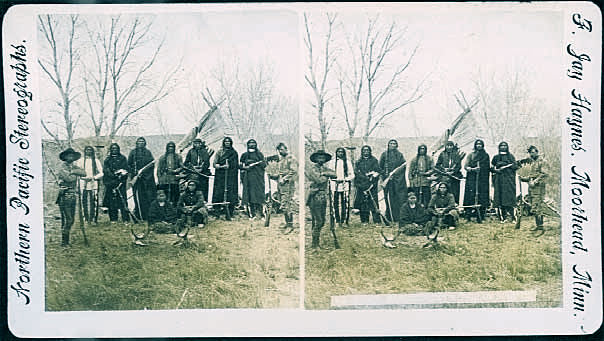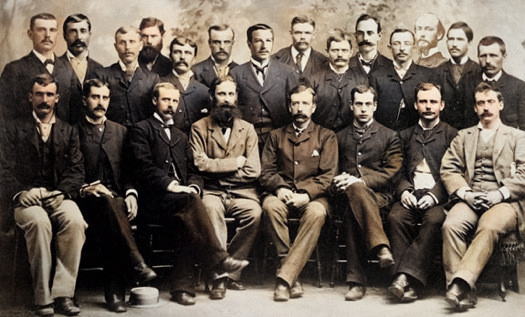
On May 17th 1846 John Kislingbury, a glazier of East Ilsley and his wife Maria, brought their second son to St Mary’s Church to be baptised. The child was named Foster Frederick Kislingbury. No one present on that day could have imagined, thirty-eight years later when Frederick died, that he would be buried with full military honours and that 20,000 people would come to pay their respects.
John Kislingbury and Maria Chennery were married in London in 1840, and living in East Ilsley when the 1841 census was taken. By 1851 the census shows that they had five children, including Frederick, who was known for the rest of his life as Frederick F. Kislingbury.
John and Maria had two further children, a daughter Jessie, born early 1852 and another, Ada, late in 1853, but their youngest son Harry Jesse died in 1854.
Within a year of Harry Jesse’s death, John and Maria and their remaining six children left Liverpool on the journey to America on the ship Webster, arriving in New York on September 3rd 1855. They then settled in Rochester, New York. There seems to have been a general exodus of Kislingburys around this time. John’s sister and her husband travelled on the same voyage, and intriguingly, John’s sister-in-law, who had been a witness at his marriage, his niece, and perhaps even his widowed mother, all preceded him and his family to America.
At the age of 17 Frederick enlisted in the Army of the United States in 1863. In 1866 he was retired from active service, and was made paymaster’s clerk at Detroit, Michigan. That same year he married Agnes Bullock who was a sister of the famous Seth Bullock, Sherriff of Deadwood, Dakota Territory. They had a son, Harry, in 1867, and another, Walter, in 1869.
Frederick was made a First Lieutenant in the regular army in 1873, and his first station in this capacity was at Fort Concho, Texas, where he helped to build a telegraph network across the southern plains working under the command of Lieutenant Greely.
In 1875 he was transferred to Fort Standing Rock, Dakota, where he had charge of the scouts in service against the Native Americans.

Frederick and Agnes had two further sons, Douglas in 1874 and Wheeler in 1876. In 1878 Agnes died and Frederick had her body returned to her home in Windsor, Canada for burial.
At the time of the Custer massacre he was with General Reno and was subsequently responsible for the capture of the Native American who killed Custer in the fight.
In 1879 Frederick married Jessie, the other sister of Sherriff Bullock and moved to Colorado. In 1880, while his regiment was stationed at Fort Custer, his second wife died of mountain fever, immediately after his return from a scouting expedition. He had been made acquainted with her danger while 150 miles from the post at the head of a scouting party and returned to the station straight away.
About a month later Frederick was asked by Greely to be second lieutenant in command of the Arctic expedition.
The Greely expedition was one of the main components comprising the first International Polar Year 1882-83. The team were to make scientific observations. They would experience 24 hours of darkness in the winter and 24 hours of sunlight in summer and would remain in the Arctic for 3 years.

After much planning and arrangements for supplies of food etc. to be left at various base camps along the way, they reached their destination, Franklin Bay. The ship which brought them, the Proteus, stayed because it was unable to find a clear path through the icebergs.
The first weeks saw tensions arise between Greely and Kislingbury, who resigned his command and prepared to return home on the Proteus. He packed up his belongings and walked out to board the Proteus, arriving just in time to see the ship disappearing through the icebergs. The next time it was due back was the following summer. He would have to wait until then. He found himself in a difficult situation, not able to leave but not part of the expedition.
Things only got worse. No ships were able to get through in the summers of 1882 and 1883. The Proteus hit an iceberg and sank, its cargo of supplies hastily bundled onto the nearest shore.
Frederick spent his time waiting, exploring the region and collecting lichens and other arctic plants and trying to be part of the expedition. He was the principal food hunter due to his expert marksmanship. Eventually, because they could not receive supplies, they made their way south to where caches of food were supposed to have been left but the team found only 60 days of rations thrown from the sinking ship. In January 1884, one by one, men started dying from starvation. Frederick died on June 1st 1884. The few remaining men were later found emaciated and barely alive. The rescuers loaded them and their dead, who had been buried nearby, onto the rescue boat.
Frederick Kislingbury’s casket arrived in Rochester on the evening of August 9th and a military funeral was held the next day at Monroe County Court House with more than 20,000 present to pay their respects. He was interred the same day at Mount Hope Cemetery.
There is a grisly postscript to this story. Suspicions had been aroused among the public and the media. The six survivors who were rescued looked remarkably fit having supposedly lived for eight months on 60 days’ worth of rations. The Army had told grieving families that they should inter the remains right away and under no circumstances should they open the caskets. The public began to ask if Frederick Kislingbury was even in the casket or if he had been left behind buried in the Arctic.
These rumours concerned Lieutenant Kislingbury’s relatives so much that they were granted permission for an exhumation, to enable a competent examination to take place. So, four days after the funeral, the iron casket containing the body was opened, and the remains found wrapped in a woollen blanket. This was removed to reveal a skeleton from which, apart from the head hands and feet, most of the skin and muscles had been removed. All extremities were attached to the body by ligaments only. No evidence was found that Lieutenant Kislingbury had died from anything other than natural causes. However, it was established, beyond doubt, that cannibalism had been resorted to by the starving men whose lives were saved by eating the dead bodies of their companions.
Despite many hardships the party had managed to survive for over three years and carry out essential scientific research. The expedition had helped map and characterise the area, and had reached the furthest point North that anyone had achieved up to that time, 83°24N. The party also pushed further west and discovered an unexplored fiord on the western side of Ellesmere Island.
If John Kislingbury had not taken his family to America, Frederick might well have become a glazier and plumber like his father and grandfather and lived an uneventful life in this quiet corner of England.
Frederick’s brother, William, also married in America and one of his daughters, Elizabeth, became a famous dancer on Broadway and a Ziegfeld Follies girl, even touring England in the 1920’s. But that’s another story….
Pictures supplied by Mike Nicolay of the USA
